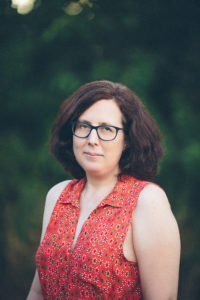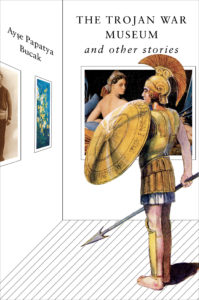 Ayse Papatya Bucak’s stories have been called: “fearless,” “elegant,” “kinetic” and “wildly imagined.” What you’ll find for sure in her story collection, THE TROJAN WAR MUSEUM, is that the stories will take you to unexpected places.
Ayse Papatya Bucak’s stories have been called: “fearless,” “elegant,” “kinetic” and “wildly imagined.” What you’ll find for sure in her story collection, THE TROJAN WAR MUSEUM, is that the stories will take you to unexpected places.
We had a chance to ask Bucak, who is a former Artist-in-Residence at The Studios of Key West, a few questions before her reading and book signing on Dec. 10.
Q: Please tell us a little about your time as a Studios Artist-in-Residence.
 A: My residency at the Studios was in May 2016. I also attended the Literary Seminar in 2017. I loved my time in Key West–I got plenty of writing done but I also went to dance and music performances at the Studios, I heard Edmund White read at Books & Books, I went to a performance of The Cripple of Inishmaan. I visited Fort Jefferson. I walked all around town whenever I needed to clear my head. I drank so much Cuban coffee.
A: My residency at the Studios was in May 2016. I also attended the Literary Seminar in 2017. I loved my time in Key West–I got plenty of writing done but I also went to dance and music performances at the Studios, I heard Edmund White read at Books & Books, I went to a performance of The Cripple of Inishmaan. I visited Fort Jefferson. I walked all around town whenever I needed to clear my head. I drank so much Cuban coffee.
The amount of nature and art that I was able to take in during that month was so restorative. I always tell my students they need to do things to feed their artistic well, and my well was well fed in Key West.
Writing-wise, I worked on drafting “Mysteries of the Mountain South” (ironically set in Appalachia) and I researched “The Dead” which is set in Key West. “The Dead” is about the sponge merchant Edward Arapian–who I first heard tell of in Joy Williams’s guide to Key West–where she refers to the brick house of a Turkish sponger but doesn’t give his name. So I literally walked over to the brick house, looked up the street number, and then looked through an old Key West phone book until I found the name…at which point I realized he was not just Turkish but Armenian which led me down a long research path culminating in a story about sponge-diving and genocide. Not quite where I expected to go. But I never would have written that story if it hadn’t been for my residency.
Q: What, if anything, is the overarching theme or project of THE TROJAN WAR MUSEUM?
A: My plan was to write stories that were both Turkish and American because I am both Turkish and American. But I think most people read the collection as a series of stories that are both historical and fairy-tale-ish.
Q: If you can boil it down, what’s the top piece of advice you’d give aspiring writers?
A: Tortoise beats hare. But you have to remember the tortoise never stops.
Q: What are you reading and recommending?
Some of my favorites from this year are Good Talk by Mira Jacob, Lost Children Archives by Valeria Luiselli, and I Will Never See This World Again by Ahmet Altan. All-time favorites: Housekeeping by Marilynne Robinson, Beloved by Toni Morrison, and The English Patient by Michael Ondaatje. I’m really looking forward to picking up a copy of Grand Union by Zadie Smith when I’m in the store. I recently heard Ross Gay read at the Miami Book Fair and I was reminded of how completely delightful his essay collection The Book of Delights is. And my friend and colleague Andrew Furman has a great book of Florida nature essays called Bitten. Oh, and favorite recent poetry collection: The Boy in the Labyrinth by Oliver de la Paz.
Q: What are you working on now, if you don’t mind saying?
A: I keep saying I’m writing a novel (which I am) but lately I have fallen into writing two new short stories, one about a creature known as the Anatolian monster, which in my story is found hiding at Topkapi Palace, and one about a (fictional) American writer imprisoned for her writing, as well as some essays about the two branches of my family (one side Turkish, one side very-waspy American).
